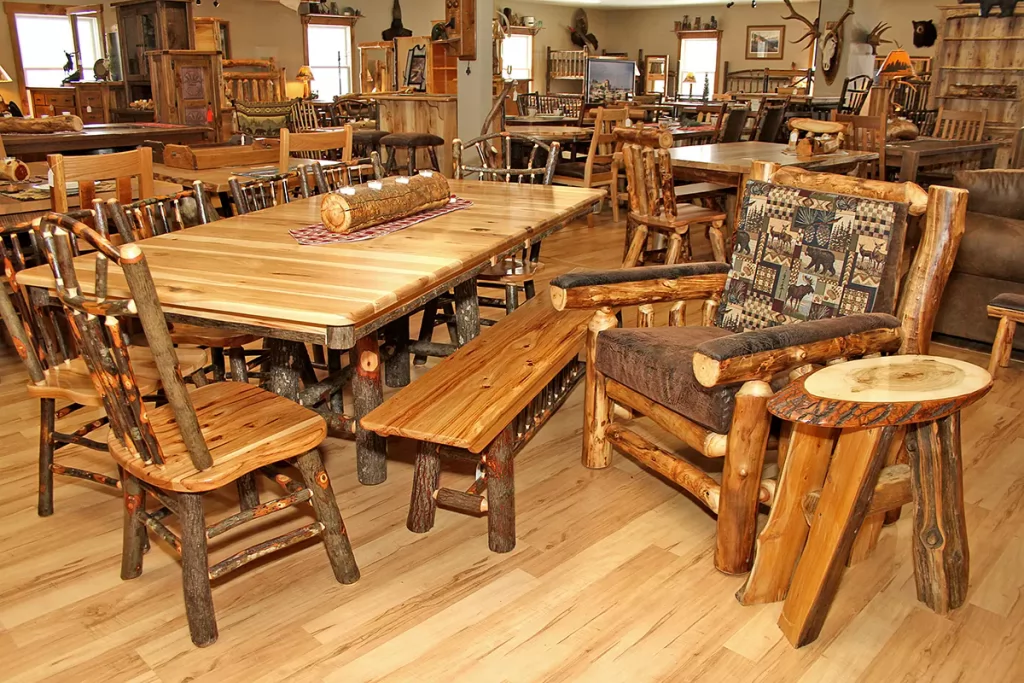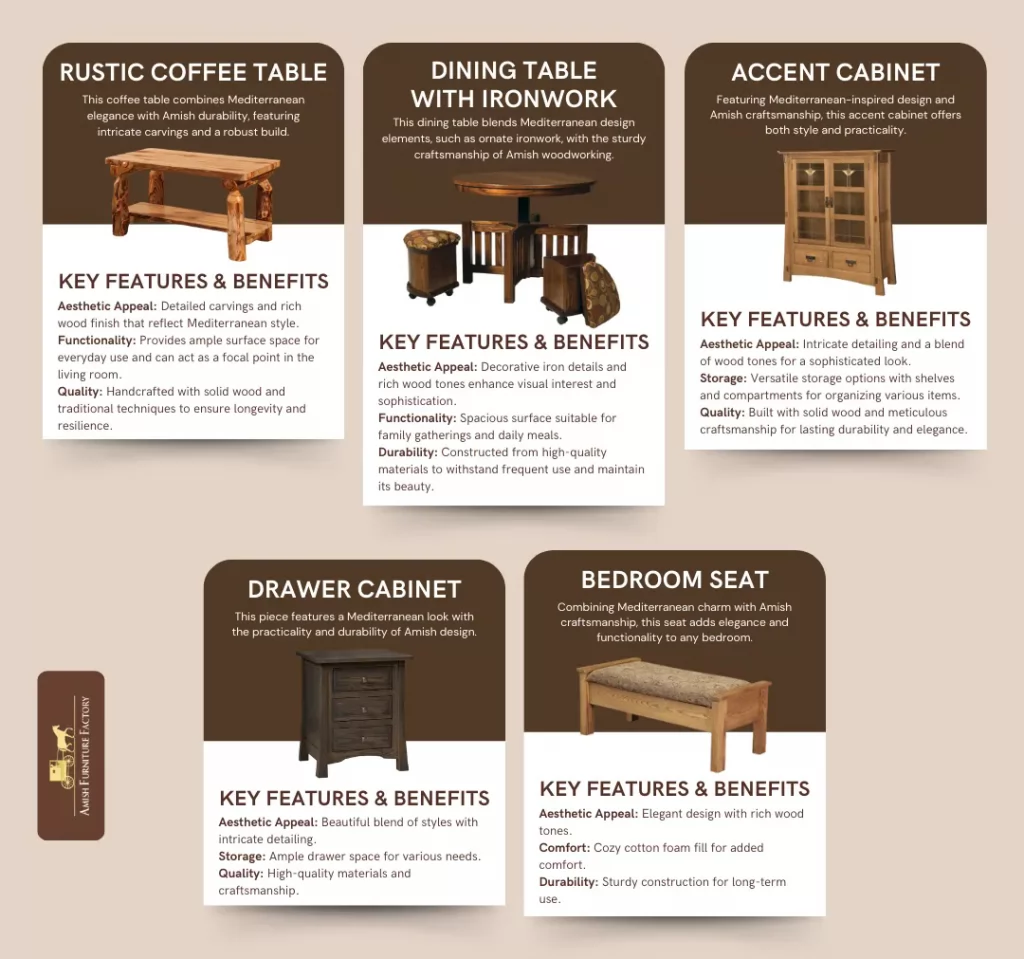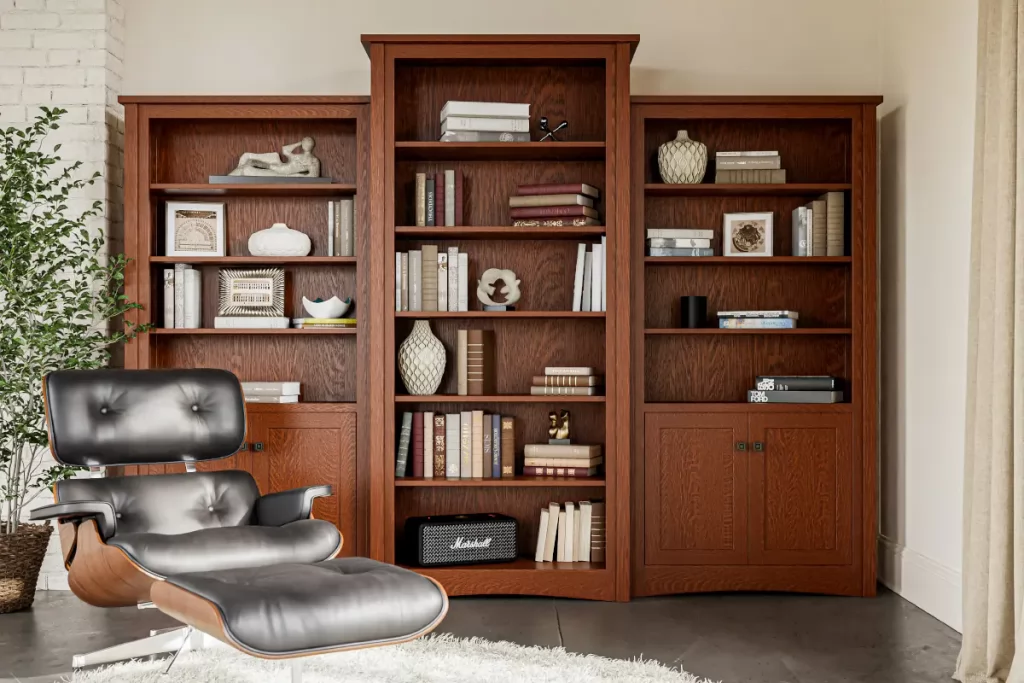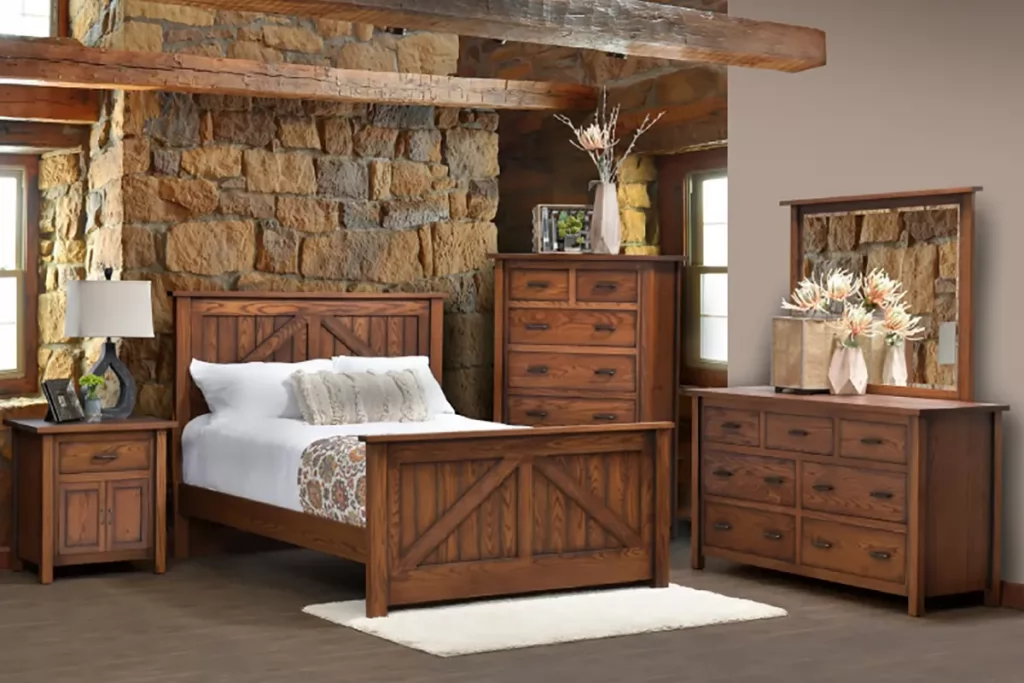In the world of furniture design, the Mediterranean style has long been celebrated for its warmth, rich textures, and timeless appeal. Now, this classic aesthetic is being given a fresh and intriguing twist by Amish artisans. Combining the storied traditions of Mediterranean craftsmanship with the meticulous techniques of Amish woodworking, these artisans are creating pieces that blend old-world charm with contemporary elegance.
Key Takeaways:
- Combining Mediterranean charm with Amish craftsmanship results in furniture that is both beautiful and built to last.
- Amish artisans use traditional methods and high-quality materials to ensure Mediterranean-inspired furniture is durable and elegant.
- Mixing Mediterranean and Amish styles can enhance any room by balancing intricate details with simple, sturdy design.
This article explores how the timeless charm of Mediterranean-style furniture and the impeccable craftsmanship of Amish artisans combine to create unique, stunning pieces for your home.
Key Characteristics of Mediterranean Style Furniture
Mediterranean style furniture brings the essence of coastal living into your home with its warm, inviting vintage charm and timeless elegance. The following are the defining features of this style that make it so enduring and beloved.
Timeless Beauty: Inspired by Spain, Italy, and Greece, Mediterranean furniture blends classic charm with a relaxed feel. It often includes intricate carvings and ornate details, using wood, stone, and ceramics to add texture and versatility.
Natural Light Usage: This style makes the most of natural light, with large windows and open layouts that highlight the beauty of the furniture. Pieces are often arranged to enhance a bright and airy atmosphere.
Classic Design: Mediterranean furniture features sturdy wooden frames, intricate ironwork, and rich fabrics. It includes classic items like coffee tables and dining chairs, using earthy tones and natural materials to create a balanced, harmonious look.
The Fusion of Mediterranean and Amish Styles
When Mediterranean elegance meets Amish craftsmanship, the result is a stunning fusion of styles that blend beauty and functionality. Imagine a rustic chair that captures Mediterranean decor’s intricate carvings and earthy tones, crafted with Amish artisans’ precise, durable woodworking techniques.
For instance, a rustic dresser might combine dark wood and intricate details from Mediterranean furniture with the solid build and fine design of Amish bedroom pieces or simple end tables. This mix creates a stunning blend that can easily complement other styles.
Here are a few more ideas:
Transform your living space with the timeless charm of Amish Rustic Furniture. Explore our collection today and bring the warmth of Mediterranean elegance into your home.
Blending Mediterranean and Amish Styles In Your Home
Incorporating Mediterranean-Amish furniture into your home can add a touch of elegance and durability to your décor. Here are some tips to seamlessly blend these styles and create a cohesive look throughout your space:
Blending Styles
To integrate Mediterranean-Amish furniture with your existing décor, focus on balancing the rich details of Mediterranean design with the simplicity of Amish craftsmanship. Start by choosing a few key pieces that stand out, such as a beautifully carved coffee table or a solid wood bookshelf.
These will act as focal points and can be paired with your current furnishings to create harmony. Use neutral or complementary colors to tie everything together and keep the space cohesive.
Styling Based on Room
A mix of Mediterranean and Amish styles can work well in your home. In the living room, try a sturdy Amish coffee table with Mediterranean details, like decorative carvings. Pair it with a comfy sofa in warm, earthy colors to match the rich wood of the table.
For the dining room, choose a handcrafted Amish dining table with Mediterranean touches. Add elegant, upholstered chairs with Mediterranean design and use a neutral rug to ground the space.
In the bedroom, go for an Amish made bed and a frame with Mediterranean-style carvings. Use soft, luxurious linens and a rug that blends both styles. An Amish nightstand with Mediterranean details can complete the look.
Choosing the Right Pieces
When selecting Mediterranean-Amish furniture for your home, consider the scale and proportion of the pieces in relation to your space. Larger items, like dining tables or bed frames, should be proportionate to the size of the room.
For smaller spaces, opt for more subtle details, such as a carved side table or a decorative mirror, to add interest without overwhelming the room.
Timeless Elegance Meets Impeccable Craftsmanship
The blend of Mediterranean and Amish styles combines timeless beauty with exceptional craftsmanship. By merging Mediterranean’s intricate details and rich textures with the durable, handcrafted quality of Amish furniture, you get pieces that are both stunning and long-lasting.
Whether it’s a Mediterranean-inspired coffee table for your living room or an Amish-crafted bed frame for your bedroom, this fusion adds charm and functionality to any space, reflecting sophistication and durability.
FAQs
Are Mediterranean-Amish furniture pieces customizable?
Yes, many Mediterranean-Amish furniture pieces can be customized to fit your specific needs and preferences. Amish artisans often offer options for customizing size, finish, and design details to ensure that the furniture complements your space perfectly.
How does the durability of Mediterranean-Amish furniture compare to mass-produced furniture?
Mediterranean-Amish furniture is generally more durable than mass-produced options due to the use of high-quality materials and traditional handcrafted techniques. Each piece is built with attention to detail and strong construction, ensuring it lasts longer and withstands everyday use.
Can Mediterranean-Amish furniture be used in both indoor and outdoor settings?
Yes, many Mediterranean-Amish furniture pieces are versatile enough for both indoor and outdoor settings. Customization options and durable finishes allow them to adapt to different environments while maintaining their aesthetic and functional qualities.






